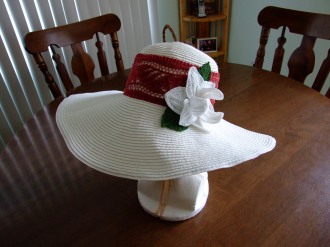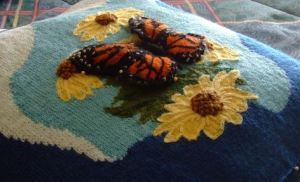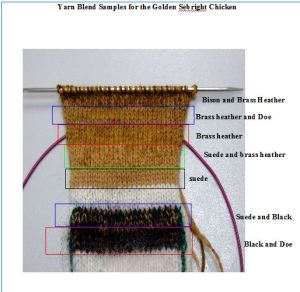I mentioned in my last post, that I was thinking about designing a different edge, or finishing round for my English Rose tablecloth. What you see in the about photo is that new design.
I wanted my last rose leaf to be free and overshadowed by the busy background lace. As a result, I worked out the following method to individualize the leaves.
I began by working each leaf individually, as you would with straight needles, adding the connecting sts to only the right side edge of the leaf. Using a spare 24 in circle needle of the same size, I then picked up the corresponding stitches for the left side of the leaf, and proceeded working across the “bridge” (connecting pattern stitches), to the next rose leaf.
Even though this is a bit of work, I find that using my extra 47 inch circles of lesser size work perfectly as carrier needles. I pick up each completed unit on these needles, (about 3 leaves to a needle). This allows me to free up the stitches on the main 60 inch that I am using for the body of the tablecloth.
I do think that this process could be used for various shapes you might want to incorporate into designing an special edging. As long as the work is supported on the “carrier” needles, they are easy to pick up when you are ready to finish the final rounds.
One thing I did do, was to use a different color needle tips for my needles; blue for the main/working needle, and purple for my carrier needles; that way there is no doubt which one to pick up.
In the photo above, I am set up with my main (blue) needle tips to begin a new leaf.
When I complete the 40 leaves, I will knit all the stitches back on to my main needle, then finish the edge.
For those who might be interested, I am going to writing up a tutorial for this edging, and will upload it when I am done.
Happy Knitting- KT







 Yes, a “post it note.”
Yes, a “post it note.”






























